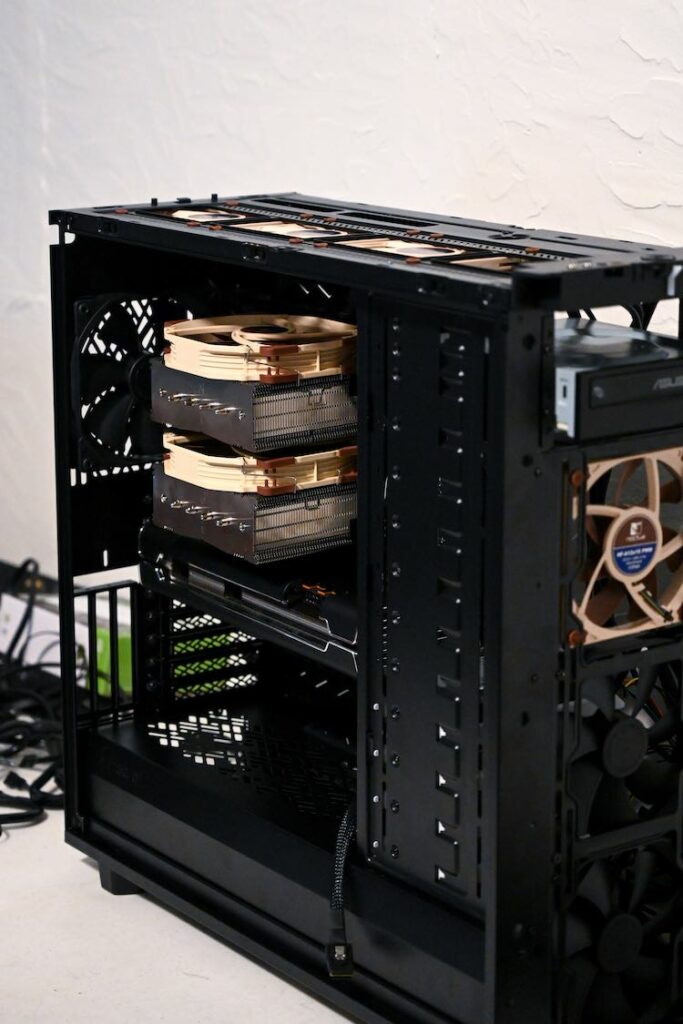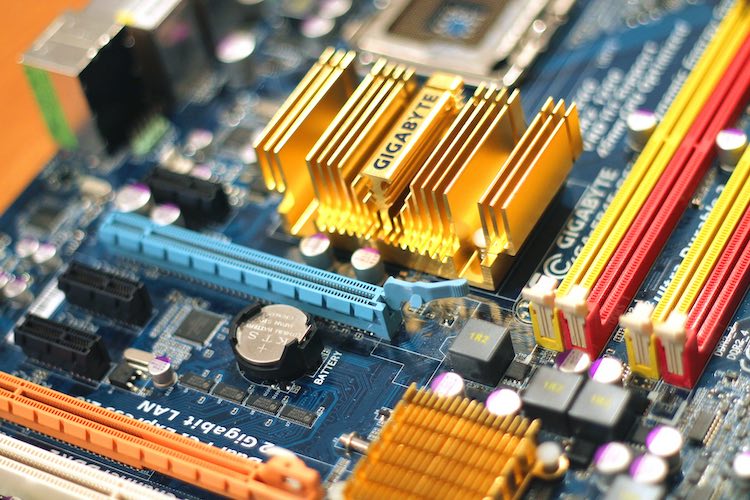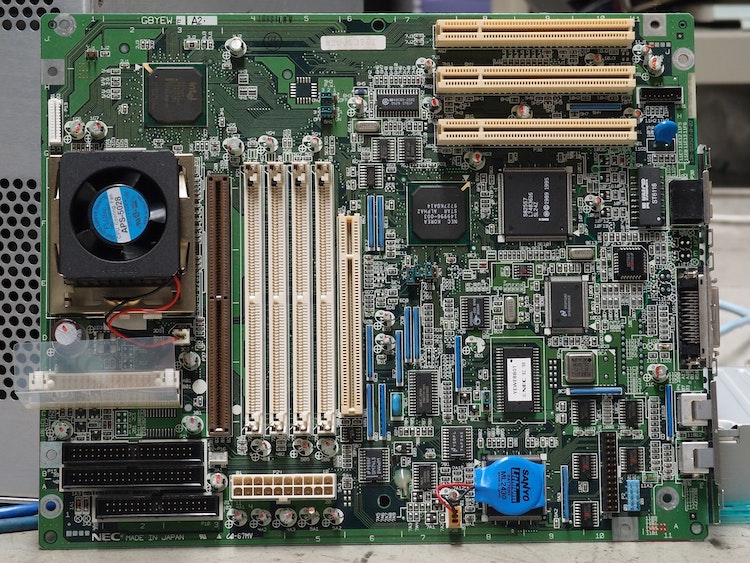We have already discussed here on the blog the importance of recycling computer motherboards and other electronic waste. Although these materials have an incredible potential for recycling, unfortunately, due to improper disposal, thousands of precious parts end up in landfills. And we are not kidding when we call them precious parts! This is because, inside the computers, there is a piece full of gold, the motherboard! So can you recycle motherboards? Of course, and in this article we’ll explain the how, when, where, and why of motherboard recycling…
As a kid, I would find old computers and harvest their parts to use to refurbish computers I had collected or build entirely new ones. That was one form of recycling, but in this day and age that’s not a particularly worthwhile use of time and energy. Now, it’s much more effective to recycle the parts, including the motherboard (the king of computer components).
Recycling motherboards is important for three main reasons:
- Firstly, it helps to minimize the environmental impact of electronic waste, which can contain hazardous materials such as lead, mercury, and cadmium.
- Secondly, it conserves natural resources by recovering valuable materials such as copper, gold, and silver.
- Lastly, it reduces greenhouse gas emissions and energy consumption associated with the manufacturing of new electronics.
What are Motherboards Made Of?
A motherboard is the hardware component in a computer system that routes data between all the other components. In the old days, each capability of a computer required a separate board. The CPU, hard drive, memory, modem, sound card, and video card were all separate components. Now, unless you’re gaming, you likely only need to add a CPU, hard drive, and a couple ram sticks to a motherboard and everything else is covered.

Motherboards are typically made of a combination of materials such as fiberglass, copper, aluminum, tin, silver, gold, and other metals. The motherboard also contains various electronic components such as transistors, capacitors, and resistors, which are made of materials such as silicon, germanium, and tantalum.
Some motherboards may also contain hazardous materials such as lead, mercury, and cadmium, which require special handling and disposal procedures to prevent harm to human health and the environment.
Why is it important to Recycle Motherboards?
Recycling instead of trashing your motherboards is important for two main reasons:
Firstly, it helps to minimize the environmental impact of electronic waste, which can contain hazardous materials such as lead, mercury, and cadmium. These can be harmful to humans and wildlife alike. We do not want these ending up in landfills!
Secondly, recycling motherboards conserves natural resources by recovering valuable materials such as copper, gold, and silver. There is not a large amount in each board, but the more we can reclaim overall, the less we have to mine and process. Ultimately, the fewer raw resources we collectively use, the less negative impact we have on the planet.
How to Recycle Motherboards?
There are several ways to recycle motherboards, depending on the recycling facilities available in your area. One option is to take the old motherboard to an e-waste recycling center, where it can be properly disposed of or recycled. These facilities have specialized equipment and processes for handling and dismantling electronic waste, including motherboards. The components of the old motherboard can then be separated and processed for recycling.

Finding e-waste collection points is not always an easy task, especially in rural areas. A second option for recycling motherboards is through manufacturer take-back programs. Many electronics manufacturers have established programs that allow consumers to return their old electronics, including motherboards, for recycling. In most cases these programs often provide free shipping or drop-off locations for consumers to dispose of their old electronics. The manufacturer will then take care of the recycling process, ensuring that hazardous materials are properly handled and that valuable materials are recovered for reuse.
For example – Dell, a US computer hardware company, is trying to do its bit. To draw people’s attention to the effort the brand is making to recycle its computers, it created a line of 14-karat and 18-karat gold jewelry from recycled gold after it was removed from motherboards.
A third option is Best Buy! If you have a Best Buy near your home, you should always remember that Best Buy takes virtually all forms of electronics for recycling, from batteries to big-screen TVs. Some types of e-waste require a processing fee, but motherboards should be free of charge. Contact your local store for more details on how to recycle electronics at that location.
Can you recover gold and silver from motherboards at home?
It’s certainly possible, but not recommended. Unless you are very knowledgeable concerning what each sub-component is and is made of, you can easily generate toxic fumes while attempting to melt the precious metals off the board. If you are a fan of scrap metal recycling and are totally intent on trying, this video we found should provide some decent suggestions.
Disclaimer: we are not suggesting you try this at home!
What happens to Recycled Motherboards?
When motherboards are recycled, the various components are typically separated and processed for the recovery of valuable materials such as copper, gold, and silver. There are some components that contain hazardous materials (mercury and cadmium are common) which first need to be identified and removed.
The materials recovery process involves shredding the motherboards and then sorting the shredded material using various methods such as magnets, eddy currents, and density separation. The sorted materials can then be melted down and used to produce new electronic components or other products.
These recovered materials – especially the metals – can be reused for a wide array of purposes. Ideally, they’ll go towards the manufacture of new computers to complete the lifecycle.

Depending on where you are in the world, the quality and safety of the recycling process can vary greatly. India does more e-waste recycling than any other country, but their recycling industry does not follow best practices. The process itself creates a significant amount of toxic waste – which is exactly what we want to avoid. More details on this can be found in this great Wikipedia article
Conclusion
In conclusion, recycling motherboards is an important step in the responsible disposal of electronic waste. Motherboards are made up of a variety of materials, some of which can be hazardous, and contain valuable resources that can be recovered through the recycling process. By properly recycling motherboards, we can help to conserve natural resources, reduce greenhouse gas emissions, and minimize the environmental impact of electronic waste. It is important to take advantage of the various recycling options available to ensure that old motherboards are disposed of in a safe and sustainable way.